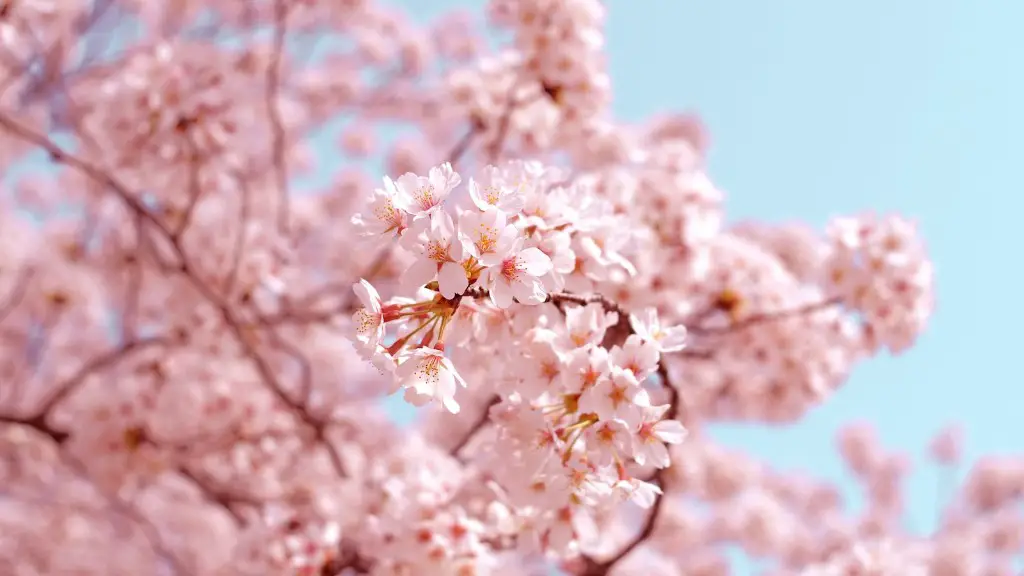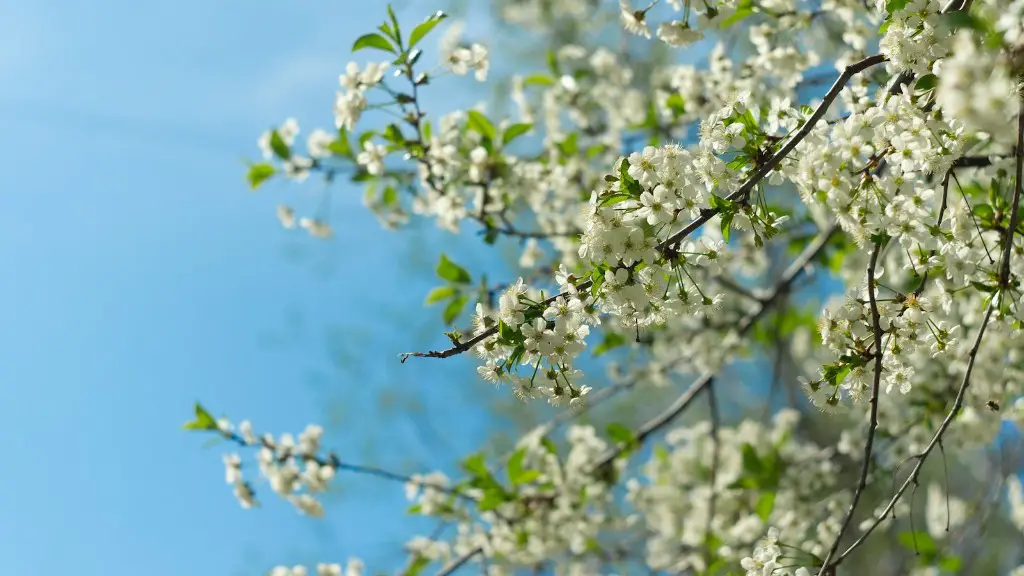Trees and Sap
Trees and plants create a variety of saps, each of which has a different purpose. The two main saps found in trees are xylem and phloem. Xylem is responsible for transporting water and nutrients up a tree’s trunk from its roots. Phloem on the other hand, is responsible for transporting food from the leaves that are created by photosynthesis. Trees and plants also produce other types of sap, such as the “gum” which is used to protect the tree from environmental elements, and resin which is used to protect the tree against pests and other predators.
Weeping Cherry Tree
The weeping cherry tree is a species of cherry tree native to Asia, particularly the northern parts of China and Japan. It is a popular ornamental tree due to its bright, white petals and weeping branches. It is also quite hardy, capable of surviving in a variety of climates. These trees are well adapted to the cold winter months, and produce an abundance of sap during the spring season.
Leaking Sap from Weeping Cherry Tree
Leaking sap from a weeping cherry tree is not unheard of, and it can be an alarming sight for any gardener. The leaking sap can be clear, red, or yellow in colour, often appearing in large droplets on the outer branches. In the worst cases, the leaking sap can drip to the ground and cover the leaves and bark in a sticky, smelly mess.
The most common cause of leaking sap from a weeping cherry tree is environmental stress. Trees in dry or urban settings are particularly susceptible to this kind of stress. When the conditions become too dry or too hot, the tree’s sap production decreases, and it starts to leak. In some cases, the leaking sap is a sign of disease or insect damage, so this should also be considered if there is a sudden and severe sap leakage.
Preventing Sap Leakage from a Weeping Cherry Tree
The best way to prevent a weeping cherry tree from leaking sap is to provide it with adequate amounts of water and nutrients. It is recommended to water the tree at least once a week and to ensure that the soil is sufficiently moist. Fertilizers are also beneficial for the tree and should be administered several times a year. Regular pruning will also help reduce sap leakage and keep the tree healthy.
In some cases, the cause of the sap leakage may be due to a disease or pest infestation. If this is the case, treating the problem with a pesticide should be done immediately, as this is the only way to stop the leaking sap.
Using the Sap
Although the leaking sap from weeping cherry trees is often considered to be a nuisance, it can be used for a variety of practical purposes. The sap itself is quite sweet and can be used to make jams or syrups. It is also a useful insect repellent, and can be applied to the leaves and branches to keep away pests. The sap can also be used to make scented oils or cosmetics.
Risks of Collecting the Sap
Collecting sap from a weeping cherry tree can be a rewarding experience, but it should be done carefully. If the tree is diseased or infested with pests, the sap should not be consumed, as it may contain harmful toxins. It is also important to ensure that the sap is collected when the conditions are favourable, such as when the tree is well watered and healthy.
Health Benefits of Sap
The sap from weeping cherry trees is a natural source of vitamins, minerals, and other nutrients. It is high in Vitamin C and antioxidants, which can help boost the immune system and protect against disease. The sap is also rich in calcium, potassium, and magnesium, which can help maintain healthy bones and muscles.
How to Collect the Sap
Collecting sap from a weeping cherry tree requires some preparation. It is important to wear protective clothing and gloves when handling the sap, as it can be quite sticky and difficult to clean up. It is also important to ensure that the tree is healthy and that it is producing a sufficient amount of sap. The sap should be collected in a container that can be sealed to prevent pests from getting inside. When the container is nearly full, it should be transferred to a sealable container for storage.
Uses of the Sap
The sap from weeping cherry trees has a variety of uses. It can be used as a sweetener, added to recipes for cakes and other desserts, or used to make jams and preserves. The sweet syrup can also be used as a topping for ice cream, yogurt, or other desserts. The sap can also be used to make scented oils or used as a special ingredient in cosmetic products.
Tips to Make the Most of Sap Collection
Collecting sap from a weeping cherry tree can be a rewarding experience, but it requires some preparation. Ensure that the tree is healthy and that it is producing an adequate amount of sap. It is also important to wear protective clothing and gloves when handling the sap, as it can be quite sticky and difficult to clean up. When the container is nearly full, transfer it to a sealable container for storage.
Safety
It is important to note that the sap from any tree can be contaminated. If the tree is diseased or infested with pests, the sap should not be consumed as it may contain harmful toxins. It is also important to be aware of the potential risks that come with collecting the sap, such as allergens or chemical contamination. If in doubt, consult an expert before collecting or consuming any sap.

